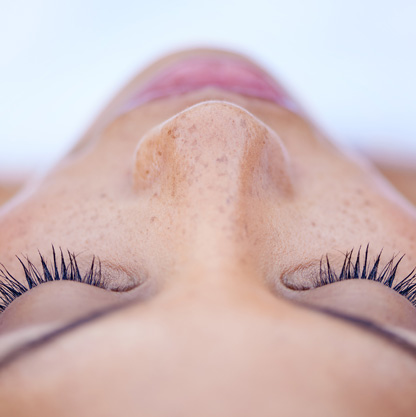
Skin cancer is the most common type of cancer affecting one in five Americans by age 70. A surgery like Mohs may be needed to remove more invasive types of skin cancer. Skin cancer reconstruction by a skilled plastic surgeon can help patients return to daily life without worrying about the scars left after surgery and wound healing.
Dr. Karen Leong performs skin cancer reconstruction so the scars originating from skin cancer surgery are less noticeable and blend into the skin tone. This becomes especially important when the scar is on a frequently exposed part of the skin, like the face, or where there is frequent movement.
What Is Skin Cancer Reconstruction?
Skin cancer reconstruction is a procedure done after skin cancer surgery to preserve the health and appearance of the skin. Advanced skin cancers can be a serious medical issue that requires surgical excision for treatment. The wound healing process may be complicated and lengthy, leading to an increased risk of complications like infection or scarring. As a plastic surgeon, Dr. Karen Leong strives to give you the best possible outcome from your reconstruction surgery. She will assess your skin and share the best approach based on the type of surgery planned and the amount of skin that needs to be reconstructed.


What Is the Skin Cancer Reconstruction Procedure Like?
The type of reconstruction surgery depends on the skin cancer surgery’s location, depth, and size.
The primary repair method is where the wound edges are brought together with sutures. This modifies the skin cancer wound from a more open or circular opening to a linear scar.
In some cases, healing by secondary intention may be the preferred protocol. Dr. Leong’s approach here is to allow the wound to heal without suturing and observe the area until a new layer of skin is formed. Scar revision treatments may be used later to minimize the color or depth of the scar.
For larger defects, a local flap or a skin graft surgery may be necessary. Both use skin and tissues from the patient’s own body to cover the wound.
A local flap uses surrounding tissue to close the defect. The nearby skin and tissue is moved and rotated to cover the wound. Local flaps provide very good aesthetic results since the flap has the identical skin texture and color as the defect.
A skin graft is used for larger defects that cannot be covered with a local flap. It involves taking skin from another area of the body that has the closest color, thickness, and surface match. The graft is removed from this location, and the donor site is sutured close. It is then sutured into the site affected by surgery. For cancer defects of complex areas of the face, this method has shown good aesthetic outcomes.
Besides the above options for repair, Dr. Leong also performs major facial reconstructions that may require multiple surgeries in combination with non-invasive treatments.
Recovery and Results after a Skin Cancer Reconstruction
Depending on the procedure needed to reconstruct the skin, the recovery and results may vary. Some primary repairs take a few weeks to heal, but the more extensive flaps and grafts can sometimes require months for full maturity. Swelling and bruising are expected after the surgery, but most of the swelling should resolve after 7-10 days. Light activities can be resumed after a few days, but strenuous exercise should be avoided for at least three weeks.
During your consultation, Dr. Leong will work with you to create a skin reconstruction plan that will return you to your usual appearance as smoothly as possible. She will also review the post-surgical instructions and what to expect over the coming days.


Am I a Candidate for Skin Cancer Reconstruction?
If you’ve had Mohs surgery or any form of skin cancer surgery in a highly functional and/or aesthetic part of your body, it is advisable to consider a skin cancer reconstruction soon after or on the same day as the surgery. Dr. Leong can discuss with you if reconstruction is needed, what type of reconstruction is recommended, and when it should be done.
Mohs surgery, or Mohs, has become the gold standard in skin cancer surgery as it leaves a maximum amount of healthy tissue behind due to its precision and results in very low recurrence rates.
In this surgical technique, layers of cancer-containing skin are progressively removed until the patient is cancer-free. It is the preferred method for treating skin cancer in delicate areas such as the face and hands because it keeps the incision small and preserves as much healthy tissue as possible.
Dr. Leong does Mohs reconstruction surgery to further minimize the effects of scarring or wound closure. Mohs reconstruction is not a cosmetic surgery and is typically covered by medical insurance.




